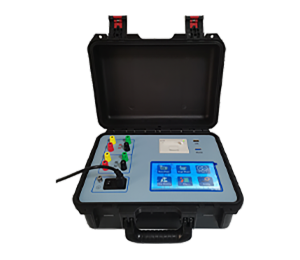 English
English


flash and fire point tester
Understanding Flash and Fire Point Testing Importance and Applications
Flash and fire point testers play a crucial role in ensuring safety and compliance in various industries that handle flammable liquids. These devices are designed to determine the flash point and fire point of a liquid—key characteristics that indicate the temperatures at which a substance can ignite and sustain combustion. This article explores the significance of flash and fire point testing, the principles behind the tests, and their applications in different sectors.
Definitions of Flash Point and Fire Point
The flash point refers to the lowest temperature at which a liquid can form an ignitable mixture with air. When a liquid reaches its flash point, it can release enough vapor to ignite if exposed to a spark or flame. The fire point, on the other hand, is the temperature at which the liquid produces enough vapor to continue burning for at least five seconds after ignition. Both measurements are critical in assessing the flammability and safety of substances, especially in industries like petrochemicals, paints, and coatings.
Importance of Flash and Fire Point Testing
1. Safety Compliance Many jurisdictions have stringent regulations regarding the handling and storage of flammable materials. Determining the flash and fire points of a substance ensures compliance with these regulations, minimizing the risk of accidents and injuries in the workplace.
2. Risk Management Understanding the flammability characteristics of materials allows companies to develop effective risk management strategies. By knowing the critical temperatures at which materials can ignite, businesses can implement appropriate safety measures, including proper ventilation, fire suppression systems, and staff training.
3. Quality Control In manufacturing processes, maintaining the quality of raw materials and finished products is essential. Flash and fire point testing helps ensure that the materials used meet specific safety and performance criteria. This is particularly important in industries like aviation fuel production, where even slight variations can have severe consequences.
Testing Methods
There are several methods for determining flash and fire points, including the Cleveland Open Cup, Pensky-Martens Closed Cup, and Tag Closed Cup tests
. The choice of method often depends on the type of liquid being tested and the level of precision required.flash and fire point tester

1. Cleveland Open Cup Test This method involves heating a sample in an open cup and introducing a flame near the surface. The temperature at which a flash occurs is recorded as the flash point.
2. Pensky-Martens Closed Cup Test In this method, a closed container is used, and the vapor above the liquid is tested for ignition using a small flame. This method is more suitable for volatile liquids and provides a more accurate flash point measurement.
3. Tag Closed Cup Test Similar to the Pensky-Martens method, the Tag test is also conducted in a closed cup but uses a different ignition source. It is primarily used for testing gasoline and lighter materials.
Applications Across Industries
Flash and fire point testing is vital in various sectors, including
- Petrochemical Industry To ensure the safe transport and storage of fuels and chemicals. - Pharmaceuticals In the production of solvents and other flammable substances, which require precise safety measures. - Paints and Coatings Understanding the flammability of materials helps in formulating products that are safe for use and comply with industry standards.
- Food Industry Certain food processing methods involve flammable oils. Testing helps in ensuring safety during production.
Conclusion
In summary, flash and fire point testers are indispensable tools for ensuring the safety and compliance of flammable liquids across multiple industries. By determining the flash and fire points, organizations can manage risks effectively, maintain product quality, and comply with regulatory requirements. As industries continue to evolve, the importance of rigorous testing and adherence to safety protocols will remain paramount.
-
Differences between open cup flash point tester and closed cup flash point testerNewsOct.31,2024
-
The Reliable Load Tap ChangerNewsOct.23,2024
-
The Essential Guide to Hipot TestersNewsOct.23,2024
-
The Digital Insulation TesterNewsOct.23,2024
-
The Best Earth Loop Impedance Tester for SaleNewsOct.23,2024
-
Tan Delta Tester--The Essential Tool for Electrical Insulation TestingNewsOct.23,2024





